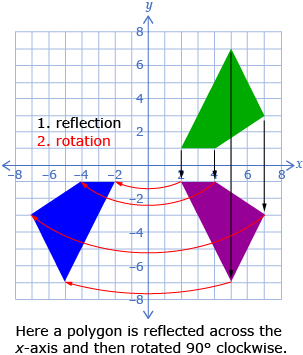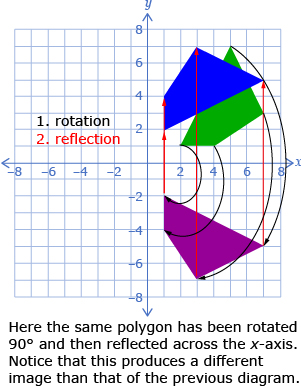Lesson 5
1. Lesson 5
1.2. Explore
Module 5: Geometry
Explore
When transforming objects, it is sometimes useful to have a physical representation to manipulate, such as the paper cutouts you used in Try This 1. Do you think this strategy would work for all transformations? ![]()
In the previous lesson, you explored how four different kinds of transformations can each be used to manipulate a figure. It is possible to use more than one of these transformations on a figure.
In Try This 1, Chad used a reflection and a rotation to arrange his fish skeletons. You may have noticed that when multiple transformations are used, the order is important. Chad used a reflection and then a rotation. If the same reflection and rotation are used, but in the opposite order, the resulting images are usually different from the ones produced in the original order.
When completing multiple transformations, treat each as a separate step. Complete the first transformation and then use those new points as a starting point for the next transformation.

